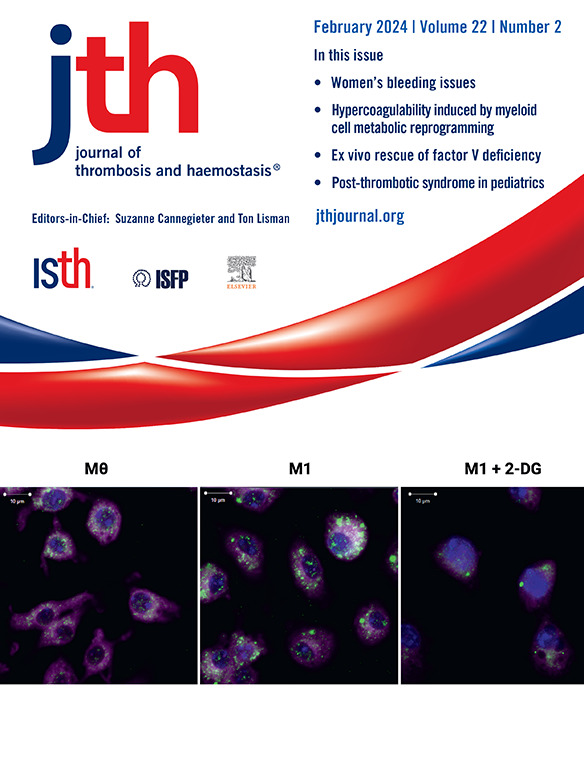Anti–platelet factor 4 antibody class and subclass in patients with vaccine-induced immune thrombocytopenia and thrombosis
IF 5.5
2区 医学
Q1 HEMATOLOGY
引用次数: 0
Abstract
Background
Vaccine-induced immune thrombocytopenia and thrombosis (VITT) is a rare complication of adenoviral vector–based SARS-CoV-2 vaccines caused by platelet-activating anti–platelet factor 4 (PF4, CXCL4) antibodies. Despite similarities to heparin-induced thrombocytopenia (HIT), the humoral characteristics of VITT antibodies remain largely unknown.
Objectives
In this study, we described the distribution of antibody classes and subclasses in patients with VITT and compared the findings with those in published reports from patients with HIT.
Methods
We studied acute samples from patients diagnosed with VITT (n = 31) from Canada between March and July 2021. We quantified anti-PF4 antibody class and subclass distributions using an in-house anti-PF4 enzyme immunoassay. We then compared our results with clinical severity, such as time of symptom onset, platelet counts, and thrombosis.
Results
All VITT patients (n = 31) had anti-PF4 immunoglobulin G (IgG) antibodies. Of those, 16 (51.6%) also had immunoglobulin M and 5 (16.1%) also had immunoglobulin A. For anti-PF4 IgG subclasses, of the 31 VITT patients with IgG anti-PF4, 28 (90.3%) had IgG1, 20 (64.5%) had IgG2, 4 (12.9%) had IgG3, and 1 (3.2%) had IgG4. No significant correlations were observed between acute-phase clinical characteristics of VITT and different antibody distributions.
Conclusion
Anti-PF4 antibodies in VITT patients were predominantly IgG, particularly IgG1 and IgG2. Compared with published data on HIT, VITT antibodies were more often IgG2 and less frequently immunoglobulin A. The role of IgG1 and IgG2 anti-PF4 antibodies in VITT pathogenesis remains unknown, but our findings can improve our understanding of VITT immunology including its clinical presentations and aid in designing monoclonal antibodies to study anti-PF4 disorders further.
求助全文
约1分钟内获得全文
求助全文
来源期刊
CiteScore
24.30
自引率
3.80%
发文量
321
审稿时长
1 months
期刊介绍:
The Journal of Thrombosis and Haemostasis (JTH) serves as the official journal of the International Society on Thrombosis and Haemostasis. It is dedicated to advancing science related to thrombosis, bleeding disorders, and vascular biology through the dissemination and exchange of information and ideas within the global research community.
Types of Publications:
The journal publishes a variety of content, including:
Original research reports
State-of-the-art reviews
Brief reports
Case reports
Invited commentaries on publications in the Journal
Forum articles
Correspondence
Announcements
Scope of Contributions:
Editors invite contributions from both fundamental and clinical domains. These include:
Basic manuscripts on blood coagulation and fibrinolysis
Studies on proteins and reactions related to thrombosis and haemostasis
Research on blood platelets and their interactions with other biological systems, such as the vessel wall, blood cells, and invading organisms
Clinical manuscripts covering various topics including venous thrombosis, arterial disease, hemophilia, bleeding disorders, and platelet diseases
Clinical manuscripts may encompass etiology, diagnostics, prognosis, prevention, and treatment strategies.

 求助内容:
求助内容: 应助结果提醒方式:
应助结果提醒方式:


